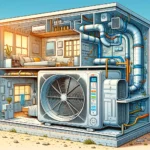It’s back-to-school time, and thanks to the COVID-19 pandemic, things look a lot different than years past. As parents and students grapple with this “new normal,” many are questioning what’s next from an education standpoint. Some recent high school graduates, all part of Generation Z, are exploring opportunities they may not have considered before — careers in the skilled trades.
According to two recent studies by ECMC Group, a nonprofit corporation focused on helping students succeed, Generation Z (born between 1995 and 2015, and nearly 74 million strong in the U.S.) has expressed interest in the skilled trades. While American teenagers consistently believe that higher education plays a key role in their future success, Gen Z is considering different paths to take after high school versus previous generations. In fact, more than half are open to something other than a four-year degree.
It’s no secret that America is facing a critical skilled labor shortage and has been for some time. For almost a decade, the trade skills deficit has gained more and more attention. According to the Bureau of Labor Statistics, there are currently more than seven million jobs available across the country, the majority of which don’t require a four-year degree. In addition, a recent survey by the Associated General Contractors of America (AGC) found that 74 percent of contractor firms predict a shortfall of qualified skilled trade workers, and a Deloitte study found that the skills gap may leave an estimated 2.4 million positions unfilled between 2018 and 2028. On top of that, other studies show that during the next five years, 40 percent of the skilled labor force will retire. Worth noting, those alarming statistics are pre-pandemic.
Yet, despite millions of available blue-collar jobs, there’s no one to fill them. Why?
There are a variety of reasons young adults aren’t entering the trades as they once did. Over the last several decades, most Americans have simply turned their backs on the skilled trades, and careers in the trades are no longer seen as desirable. Parents push for higher education and expensive university degrees rather than community college or trade schools. Community colleges, trade schools, and even on-the-job apprenticeship programs are seen as alternatives to education, and even the most well-intentioned parents and high school guidance counselors see apprenticeships and on-the-job training opportunities as “consolation prizes” only suited for kids who somehow aren’t cut out for those expensive four-year degrees. In addition, most high schools nationwide no longer offer vocational or shop classes or any type of skilled trade training opportunities that our grandparents were excited about.
Unfortunately, there is a widespread stigma against skilled labor. And now, the skills gap is wider than it’s ever been, with no end in sight.
But the simple fact is that many people enjoy working with their hands, and the thought of spending the next 45 years stuck behind a desk and/or computer screen isn’t where they see themselves. For some, college just isn’t a good fit.
While it seems all the focus these days is on millennials, perhaps it’s Generation Z who will change the course? Some recent studies are finding that students are becoming more excited about joining a skilled trade.
Filling all those jobs in the skilled trades won’t happen overnight. Pretty serious cultural shifts will need to occur, and students need to be aware that there are lots of opportunities in the skilled trades that pay well and don’t require a college degree. While many of these jobs require some degree of training through trade schools, others require skills that can be learned on the job.
For instance, air duct cleaning is a growing industry, and air duct cleaning technicians are in demand. These days indoor air quality (IAQ) is top-of-mind for both homeowners and facility managers.
According to the US Census Bureau, the US population as of July 1, 2019, was 328,239,523, with 119,730,128 households. That’s a lot of air ducts! Not to mention all of the manufacturing facilities, educational institutions, hospitals, office buildings, etc. that have HVAC systems and air ducts.
https://www.achrnews.com/articles/143697-choosing-air-duct-cleaning-as-a-career-path














